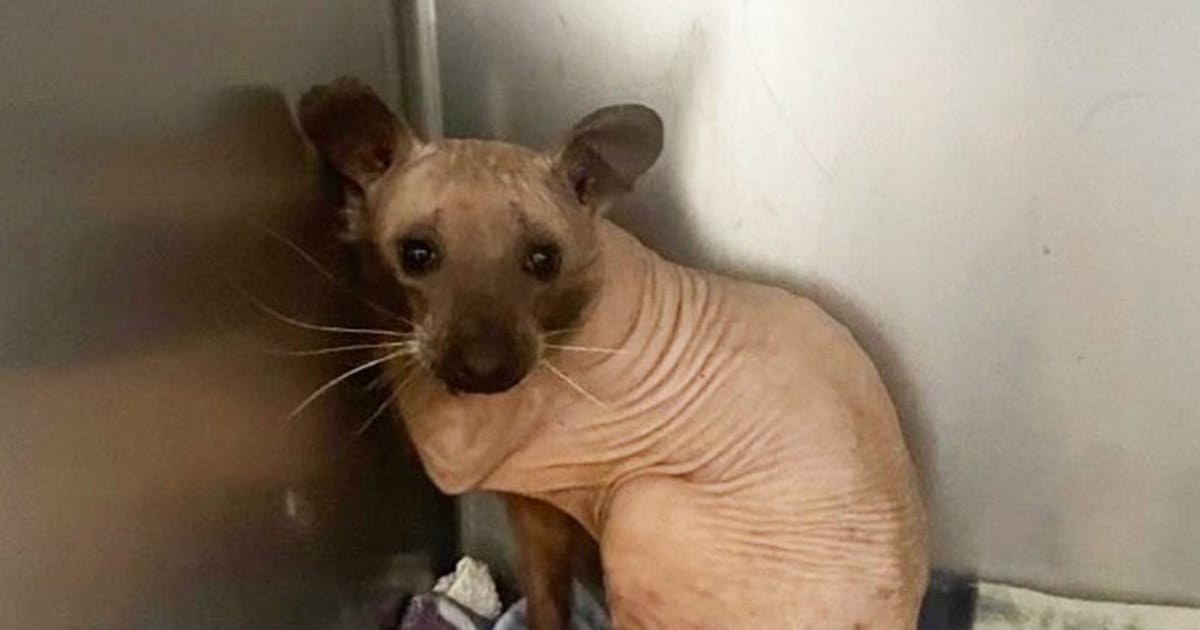Fur is not just a fashion statement for animals – it serves a crucial purpose in protecting them from the cold. Moreover, it gives them their unique appearance. But did you know that there are some animals that, when completely bald, might appear unrecognizable?

Recently, an incredible creature that resembled a hairless cat was rescued, only to be revealed as a rare and extraordinary hairless raccoon. Let’s dive into the story of this unique animal and her remarkable survival!
Last month, the nonprofit conservation organization, Hope for Wildlife, located in Nova Scotia, received an unexpected visitor. A couple in West Arichat discovered a shivering animal in their backyard during the chilling winter temperatures. Upon first glance, the animal appeared to be a Sphynx cat, but it turned out to be an entirely bald raccoon!

It’s hard to identify a raccoon without its trademark mask-like fur pattern. This little creature, a northern raccoon, suffers from severe alopecia, resulting in complete baldness. Hope Swinimer, the director of Hope for Wildlife, explained that although they have encountered cases of balding raccoons before, this particular raccoon’s condition was the most severe. She stated, “It’s just tufts of fur around the snout, ankles, and feet. This is a severe case.”
Despite being a female, the raccoon was given the name Rufus, after the naked mole rat character from the cartoon Kim Possible. The exact cause of Rufus’ hair loss remains undetermined. The rescue organization indicated that it could be an autoimmune disorder damaging her hair follicles. They ruled out possibilities such as parasites, mange, and fungal infections, as her skin appeared to be healthy.
Raccoons rely on their fur for warmth and protection from the elements. The rescuers were amazed that Rufus managed to survive the harsh winter without fur, without suffering from frostbite or worse.
They exclaimed on Facebook, “We are quite amazed that this little lady managed to make it [through] the winter without fur and without suffering from frostbite or worse!” They further mentioned Rufus’ spirited personality and attributed her successful survival to her own determination. Although she arrived in poor condition, she gradually showed signs of improvement over time, gaining both strength and resilience.
Given the circumstances, Rufus might become a permanent resident at the shelter. She will have a specialized habitat that includes an outdoor space for her to crawl into and keep warm. The habitat will also be equipped with amenities like hammocks and nesting boxes.




